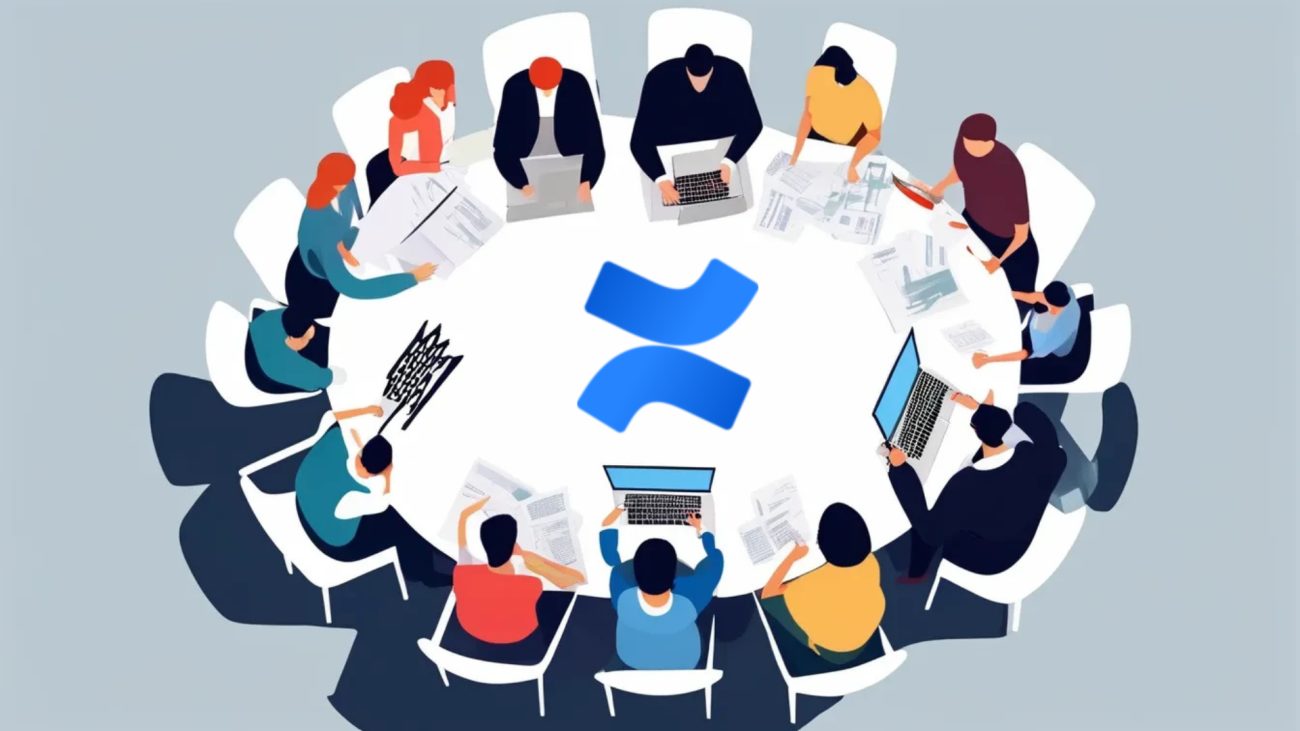Managing design and software development projects can be a complex and challenging task, especially when dealing with multidisciplinary teams, clients with different needs, and tight deadlines. Proper organization, unified and detailed documentation, and efficient project progress tracking are crucial to ensuring timely deliveries while maintaining quality and alignment with stakeholder expectations.
Managing design and software development projects can be a complex and challenging task, especially when dealing with multidisciplinary teams, clients with different needs, and tight deadlines. Proper organization, unified and detailed documentation, and efficient project progress tracking are crucial to ensuring timely deliveries while maintaining quality and alignment with stakeholder expectations.
One effective way to achieve this goal is by adopting a well-defined structure for project management. This article describes how a structured template in Confluence can be the key to optimizing project management, particularly for consulting teams handling various projects, clients, and requirements.
Why Use a Template in Confluence?
Before explaining what we did, we need to detail why we did it and where the motivation came from. As part of the Consulting and Partnerships team at ELDORADO Institute, during a project involving Web and Mobile Design and Development in 2024, we identified opportunities for improvement in each technical area of the project and in the relationship between the technical team and project stakeholders: lack of detailed decision-making records and misalignment of information and updates between the design prototype and the implemented code.
Confluence is a widely used collaboration and documentation tool in corporate and agile environments, particularly for organizing and centralizing project communication. It allows all team members, regardless of location, to access information in a centralized, up-to-date, and collaborative manner. Additionally, this platform is owned by Atlassian, the same company behind Jira, Bitbucket, and other tools. One of the reasons we chose Confluence was its integration with Jira, ensuring seamless communication between both systems.
Consequently, one of the most critical aspects of project success and the handover process between Design and Development teams is creating documentation based on organization, detail, and information sharing. A great approach for modern technology teams is the creation of templates—digital artifacts that provide a structured and customized foundation tailored to a team or project’s specific needs, such as scope, assumptions, and requirements.
By using a template in Confluence, teams can ensure a consistent structure for each project, making it easier to track all stages and processes involved, from initial planning to execution and final delivery.
Furthermore, leveraging templates in Confluence helps maintain project documentation in an organized and efficient manner, reducing communication failures and ensuring that all team members and stakeholders remain on the same page.
Creating the Confluence Template for Design and Development Documentation and Management
The Confluence template was designed to address the demands of design and software development projects, incorporating agile management aspects, client communication, sprint planning, and requirements tracking. Below, we will explore each section of the template in detail and understand how to use them to optimize your project execution.
Project Information
The first section of the template records essential project details, including the project name, client, project type (e.g., MVP, Discovery, Redesign), key dates such as start and end times, and the responsible team members for different work areas.
This section is crucial for providing a clear project overview, ensuring all team members understand their tasks and the ultimate goal. Categories like “Funding” and “Project Code” can help document administrative aspects accessible.
Stakeholders and Team
The success of any project depends on effective communication with all involved parties, both internal and external. The Stakeholders section lists all project participants, including the client, team members, leaders, and any other relevant parties, clearly identifying roles and providing contact information for streamlined communication.
Including the ELDORADO Team ensures a clear distinction between internal teams, facilitating coordination across different expertise areas.
Timeline
A timeline is one of the most powerful tools for keeping the team aligned on project deadlines and deliverables. The Confluence template allows clear and objective documentation of each sprint’s start and end dates, along with the project’s overall progress. Additionally, important milestones and validation steps, such as design reviews or client feedback sessions, can be included.
This structured timeline helps maintain focus on short- and long-term goals and allows for quick adjustments in case of project changes.
Alignment Meetings
Meetings are essential to ensure all project stakeholders are aligned on delivery stages and potential issues. The alignment meetings section in the template records meeting dates, participants, discussion topics, and decisions made. This ensures quick access to relevant information and allows the team to track discussions.
Additionally, documenting meetings creates a clear trail of all interactions, which can be invaluable for future reference or resolving misunderstandings.
Product Requirements and Business Rules
The Product Requirements section shapes the product by detailing client and product needs, including user stories, functional and non-functional requirements, and acceptance criteria. This section serves as the foundation for development, clearly defining what needs to be done and how validation will occur.
The Business Rules section describes specific business constraints that influence the product’s structure or behavior while respecting strategic definitions.
Having a clear view of requirements and business rules prevents ambiguity during development and design prototyping, reducing rework and ensuring the final product aligns with client expectations and business strategy.
Design
This section documents and shares all design decisions, whether made by designers alone or in collaboration with project stakeholders. It enables greater collaboration among professionals and unifies relevant information and files.
The Design section includes dedicated pages for each stage of the digital product and user experience design process. For example, the Prototyping page records all editable files and links to interactive prototypes (such as those from Figma), collaborative whiteboard tools, and other relevant assets.
Development
The Development section organizes essential information for managing releases and maintaining code. It provides an overview listing the web page URL, development leads, version management, and a detailed version history. Additionally, a dedicated area tracks pending actions for specific releases, such as content reviews and compatibility tests across different devices.
The template includes important links, such as the code repository, test environment, and live production site, ensuring easy access to critical development resources. It also includes rollback procedures, deployment instructions, and support documentation.
The Release Notes section provides a detailed summary of each version, highlighting major changes, performance improvements, bug fixes, and known issues, helping both the technical team and users stay informed on software updates.
Tasks and Sprint Schedule
Based on user stories and product requirements, the template allows the creation of task lists for each sprint. Each task can be assigned to a responsible party, with priority and status tracking. Additionally, the sprint schedule section offers a clear view of project progress, quickly identifying any roadblocks or delays.
This structure enables incremental, manageable work delivery in line with agile methodology principles.
Feedback and Retrospective
After each sprint, gathering feedback from stakeholders and the team is crucial. The feedback and retrospective section records positive aspects and areas for improvement. It also documents lessons learned and corrective actions for the next sprint, helping the team continuously adjust and improve performance.
The retrospective is one of the most valuable aspects of the agile process, allowing the team to learn from each work cycle and become more efficient over time.
Benefits of Using the Template in Confluence
Using this Confluence template brings numerous benefits, particularly for consulting and software development projects where organization and communication are critical to success. Key benefits include:
- Centralized Information – All project details in one place for easy access.
- Improved Collaboration – Multiple team members can update the template simultaneously, keeping information current.
- Progress Tracking – Sprint structure and reviews help maintain focus and monitor project advancement.
- Efficient Planning & Execution – Clearly detailed tasks, requirements, and responsibilities enhance workflow.
Conclusion
The Confluence template for project management and development is a powerful tool for teams seeking to optimize their processes and ensure all project aspects are well-documented and executed. It enhances clarity, organization, and collaboration, ensuring timely, high-quality project completion that meets expectations.





